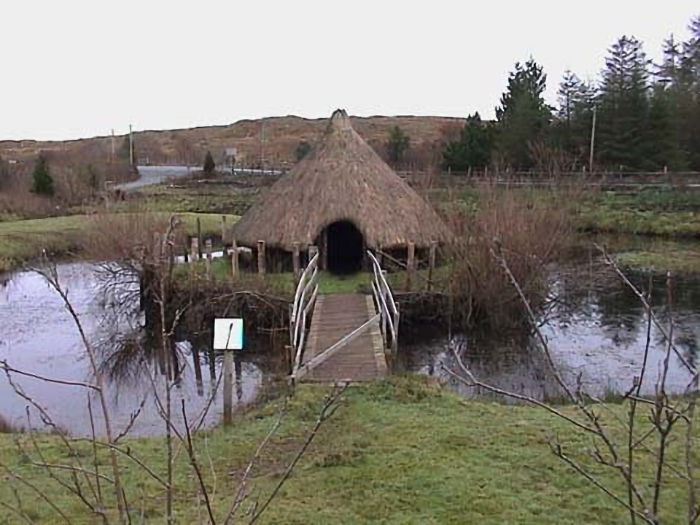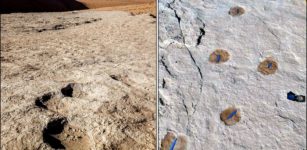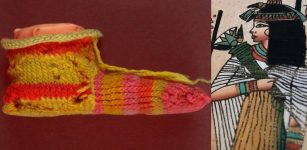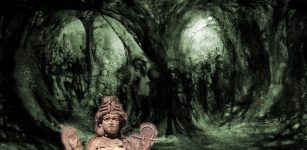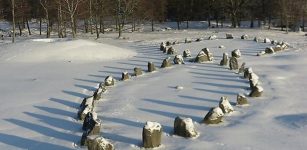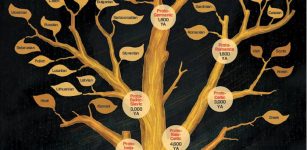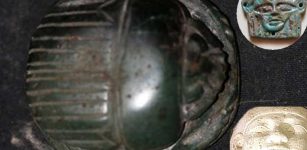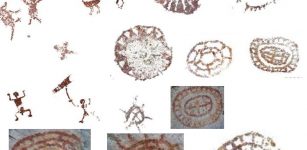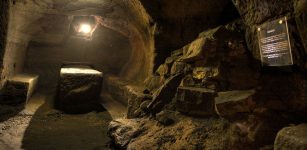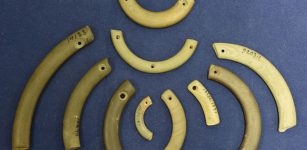DNA Unravels Mysteries Of The Crannogs, Ancient Artificial Islands Older Than Stonehenge
Conny Waters - AncientPages.com - Crannogs are fascinating ancient artificial islands in Britain and Ireland. Previous studies have revealed hundreds of crannogs, mostly in Scotland, Ireland, and Northern Ireland. These structures are older than Stonehenge, and the purpose of the curious islands has prompted scientists to examine the structures that were built long before England’s stone circles came into existence.
Iron Age reconstructed crannog in Scottish Highlands. Credit: Adobe Stock - DMac
As previously explained on AncientPages.com, Crannogs were fortified settlements constructed on artificial islands in lochs. These artificial islands have been used for about 2,500 years. There are hundreds of small crannogs scattered across Scotland. Most of them are in the Outer Hebrides islands off the mainland's northwest coast.
At one of the sites well-preserved Neolithic pottery had previously been found on the loch bed by Chris Murray, a former Royal Navy diver who lives in Lewis.
The archaeologists' investigation included making underwater surveys and carrying out excavations at the sites to obtain "conclusive evidence of artificial islet construction during the Neolithic".
The archaeologists, whose research has been published in the journal Antiquity, said the crannogs represented "a monumental effort" through the piling up of boulders on the loch bed and in the case of a site in Loch Bhorgastail the building of a stone causeway.”
The most recent study conducted by researchers focused on the recovery of DNA from the sediments surrounding ancient artificial islands.
Scientists are now convinced the crannogs were built and occupied from the Neolithic, 4000–2200 BC, through to the 16th century AD.
However, the crannogs' aquatic location makes it difficult for archaeologists to excavate. So Professor Antony Brown, from UiT Arctic University of Norway, and an interdisciplinary team from across the UK set out to take samples from lake sediments instead.
Previous research had recovered environmental data, like pollen, from sediment cores obtained near crannogs. The material gets washed off the island and deposited layer by layer in the lake, so cores of these sediments reveal crannog conditions over time.
Now, Professor Brown and the team have also recovered DNA from these cores, known as "sedaDNA." This was combined with the analysis of other materials in the sediment to build an integrated picture of the crannogs. Their work is published in the journal Antiquity.
The team analyzed sediment cores from around crannogs in White Loch of Myrton, Scotland, and Lough Yoan, Ireland for this research. Radiocarbon dating of the cores revealed the crannog in White Loch was built in the Iron Age, around 400 BC, whilst Lough Yoan's dates to the medieval period. They found both were abandoned and re-occupied multiple times.
The integrated analysis showed that the crannogs were important places, likely high-status homes, stocked with resources. The team found pollen from bracken, for bedding, as well as signs of crafting on the islands.
Additionally, sedaDNA from cows, sheep, and goats indicated that animals were kept on the crannogs. At one of the Lough Yoan crannogs, bone fragments suggest that were butchered on-site in high quantities, likely for feasts. This supports previous research suggesting some crannogs were compounds used by the elite, perhaps for ceremonial occasions.
Replica crannog in Waterford, Ireland. Credit: Antony Brown
The team also found that the cost of supplying the crannogs with these resources meant they were linked to dramatic changes in the local area. Changes in pollen and plant sedaDNA indicated that crannog construction was associated with deforestation and was likely to provide materials and clear farmland. Meanwhile, waste from the inhabitants polluted the lakes, leading to human impact on lake ecosystems as early as the Iron Age.
As such, this research sheds new light on life on crannogs and shows how this integrated method of studying sediment cores provides insight into otherwise hard-to-study waterside sites. This approach, incorporating sedaDNA, provides researchers with a powerful new tool.
See also: More Archaeology News
The team is already expanding to study other crannogs. These unique structures are under threat from erosion and other environmental changes.
The study was published in the journal Antiquity
Written by Conny Waters - AncientPages.com Staff Writer


